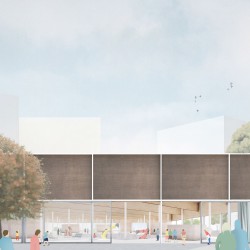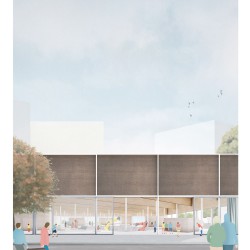Sasa Ciabatti . Bilyana Asenova . + NON ARCHITECTURE
By tradition, manufacturing has been thought to be a process that turns raw materials into physical products, and the factory, in managing fragmented communications protocols and automation practices, is the structure where manufacturing happens. Today, drivers such as technology, sustainability, optimization and the need to meet customer demands have once again encouraged the transformation of the manufacturing industry, to become adaptive, fully connected and even cognizant of its own power quality.
_
How would the future answer to the production segregation of the past?
The future factory transforms from a receiver of instructions to an open environment for cooperation between suppliers and customers. With a flexible production and quick adaptation, suppliers and customers find themselves in a close collaboration at an early stage in the development of a new product.
Urban Factory highlights the importance of objects’ customization. The proposal establishes a new relationship between factory employers and clients. A new chain is created:
Customers meet an employee in an open environment – the meeting points, where the preliminary design is discussed. After, the employee communicates to the engineers the discussed product. From the engineer stations, the engineer sends the required data to the machine that after produces the desired object. The robots start the spectacle of production, which can be observed instantly from the costumers of the factory. The end product is then sold to the costumers in the commercial kiosks.
Urban Factory is in the centre of a dense urban area, open to the city and its citizens. It is a public building for development of customized objects, a hybrid that allows mixture of production, exhibition and trading and in that way creates more individual and personalized production of goods.











